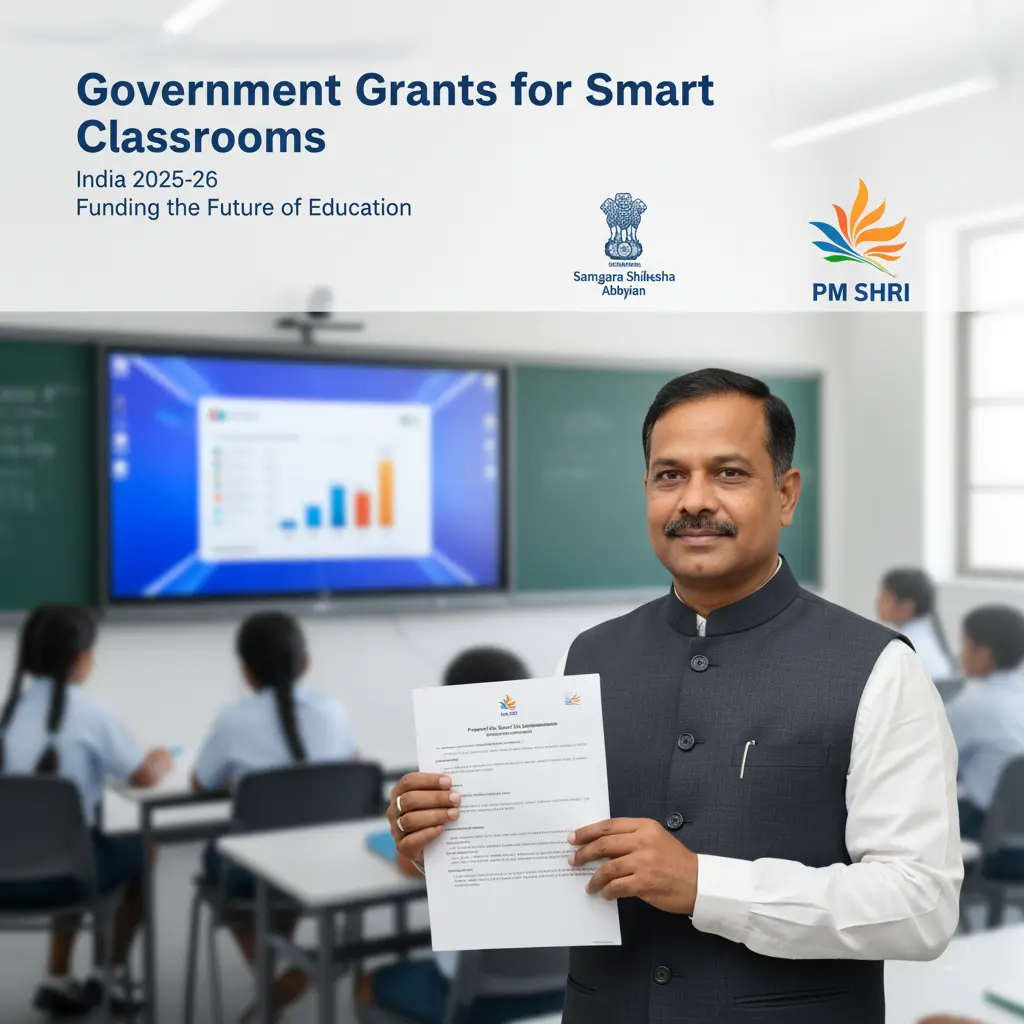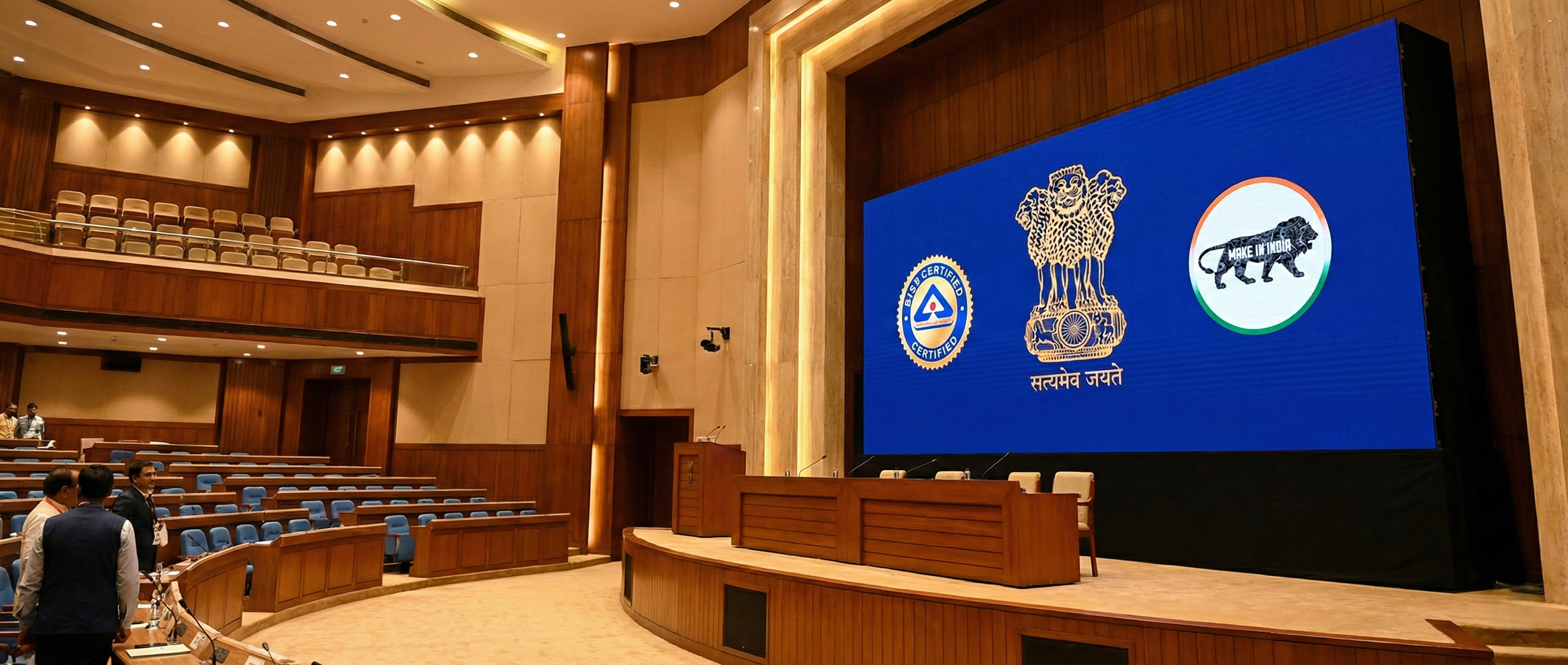The digital transformation of India's education system is in full swing. Under the ambitious goals of the National Education Policy (NEP) 2020 and the Digital India initiative, the government is actively promoting the integration of technology into classrooms. For schools, particularly those in the government and public sectors, this presents a golden opportunity to modernize their infrastructure without a heavy financial burden. The government offers a range of grants and schemes for smart class implementation to help schools bridge the digital divide and provide quality, equitable education to all students. This guide will provide an in-depth look at the key initiatives, funding mechanisms, and eligibility criteria for these programs, helping school administrators and officials in India navigate the process of securing financial assistance for their smart classroom setup in 2025.
The Policy Push: Why the Government is Funding Digital Education
The government's push for smart classrooms is not a standalone project; it's a core component of several national missions aimed at holistic development. The National Education Policy (NEP) 2020 serves as the primary policy framework, emphasizing technology as a tool for personalized learning, teacher training, and universal access to quality education. The policy's key recommendations on digital education include:
Bridging the Digital Divide: Providing access to high-quality education for students in remote and rural areas through digital platforms and e-content.
Strengthening Digital Infrastructure: Ensuring that schools have reliable internet connectivity, digital devices, and interactive displays.
Developing Digital Pedagogy: Training teachers to effectively use digital tools to create engaging and interactive learning experiences.
The financial and operational support for these goals is channeled through various schemes, with the central and state governments working in partnership to implement them. The Union Budget 2025 also includes provisions to extend broadband connectivity to government secondary schools in a phased manner under the BharatNet project.
Key Government Schemes and Grants for Smart Classrooms
Securing funding for a smart classroom setup in India involves understanding the various government schemes that provide financial assistance. Here are the most prominent ones in 2025:
1. Samagra Shiksha Abhiyan (SSA)
This is the largest and most comprehensive scheme for school education in India. SSA subsumes three erstwhile schemes: Sarva Shiksha Abhiyan (SSA), Rashtriya Madhyamik Shiksha Abhiyan (RMSA), and Teacher Education (TE). The scheme is implemented as a Centrally Sponsored Scheme in partnership with State and UT Governments.
Purpose: The scheme provides financial assistance to States and UTs for a wide range of educational interventions, including the establishment of ICT laboratories, smart classrooms, and virtual classrooms.
Funding Mechanism: Under the "ICT and Digital Initiatives" component of the scheme, grants (both non-recurring and recurring) are available to States and UTs. The grant amount is determined based on the project proposals submitted by the states and union territories. The Union Budget for 2025-26 continues to allocate funds for these digital initiatives, including the provision for digital boards.
Eligibility: The scheme primarily targets government schools from pre-school to senior secondary level. The focus is on universalizing access and improving the quality of education with an equitable and inclusive approach.
2. PM SHRI (PM Schools for Rising India) Scheme
Launched to develop more than 14,500 schools across India as PM SHRI Schools, this scheme aims to showcase the implementation of the National Education Policy (NEP) 2020. These schools are intended to be a model for other schools in their respective regions.
Purpose: PM SHRI schools are being developed to have a modern, technology-enabled learning environment. The scheme's goals include improving infrastructure and providing access to digital education.
Funding Mechanism: The scheme is a Centrally Sponsored Scheme with a total project cost of ₹27,360 crore for a period of five years. This funding is used for various aspects, including digital education infrastructure.
Eligibility: Schools are selected based on a three-stage selection process, with the central government providing financial support for the development of digital infrastructure, including smart classrooms.
3. PM e-VIDYA
PM e-VIDYA is a groundbreaking initiative launched by the Ministry of Education to unify all digital, online, and on-air education efforts. It provides multi-mode access to school education across the country, especially for those in remote areas.
Purpose: While not a direct grant for hardware, this scheme is crucial as it provides the digital content and channels that make smart classrooms effective. It includes initiatives like the DIKSHA platform, Swayam Prabha TV Channels, and e-content for students with special needs.
Funding Mechanism: The program unifies and allocates funds to various digital education platforms to ensure the availability of free, high-quality e-content in multiple languages.
Eligibility: This is a national-level scheme, and schools can benefit from the content and resources provided through it, making their investment in hardware more impactful.
4. State-Specific and Local Government Initiatives
Beyond the central schemes, many state governments and even local authorities are launching their own programs to modernize education. For instance, the Delhi government has sanctioned a significant investment to transform classrooms into smart classrooms, equipped with interactive panels and audiovisual aids for Classes 9 to 12.
How to Find Them: School administrators should actively monitor announcements from their state's education department, local municipal bodies, and district education officers for specific grants and funding opportunities.
Actionable Insight: These local initiatives often have simpler application processes and can be more responsive to specific regional needs.
How to Apply for Government Grants: A Step-by-Step Guide
The process of securing government funding for smart classroom implementation can be complex, but a structured approach can make it much more manageable.
Familiarize Yourself with the Schemes: Start by thoroughly understanding the objectives and eligibility criteria of the schemes mentioned above. Pay close attention to the financial year 2025-26 budget provisions and guidelines.
Contact Your State Education Department: All Centrally Sponsored Schemes are implemented in partnership with the states. Your first point of contact should be the State Education Department or the State Project Director of the Samagra Shiksha Abhiyan. They can provide details on the state-specific application process, submission deadlines, and funding cycles.
Prepare a Detailed Project Proposal: A strong proposal is key to securing funding. It should include:
Justification: A clear explanation of why your school needs a smart classroom setup and how it will benefit students and teachers.
Budgetary Requirements: A detailed breakdown of costs, including hardware (interactive panels, computers), software, installation, and training.
Implementation Plan: A timeline for implementation, including a plan for teacher training and ongoing maintenance.
Expected Outcomes: Quantifiable metrics for success, such as increased student attendance, improved test scores, and higher teacher satisfaction.
Engage with Stakeholders: Involve teachers, parents, and community leaders in the process. Their support and input can strengthen your proposal and ensure a successful implementation.
FAQs: Your Questions on Smart Class Funding Answered
Q1: What are the main grants available for smart classrooms in India? A: The primary grant for smart classroom implementation comes under the Samagra Shiksha Abhiyan. Additionally, the PM SHRI scheme provides significant funding for model schools, and some states have their own specific initiatives.
Q2: Can private schools also avail of these government grants? A: Generally, most of the schemes mentioned, such as Samagra Shiksha Abhiyan and PM SHRI, are for government and government-aided schools. However, some state-specific schemes or public-private partnerships might be available for private institutions. It is best to check with the state's education department for the latest updates.
Q3: Does the grant cover only hardware or also software and content? A: The grants under schemes like Samagra Shiksha Abhiyan provide a comprehensive package that includes funding for ICT labs, smart classrooms, and digital boards. Additionally, schemes like PM e-VIDYA provide free, high-quality digital content, which can be integrated with the hardware, thus covering both aspects.
Q4: How important is teacher training for securing these grants? A: Very important. The National Education Policy (NEP) 2020 and government schemes emphasize not just the provision of technology but also its effective use. A well-documented plan for professional development and teacher training will make your proposal more competitive.
Q5: How can my school's location (rural vs. urban) affect the application process? A: Government schemes often have a specific focus on bridging the digital divide. Schools in rural, tribal, and remote areas may receive priority and more favorable funding terms. The application process and documentation might also be simplified for schools in these regions to encourage higher adoption.
Conclusion: A Digital Future for Every Classroom
The Indian government's commitment to digital education is clear and unwavering. From the comprehensive Samagra Shiksha Abhiyan to the ambitious PM SHRI scheme, a robust framework is in place to support schools in their journey towards a digital future. For school administrators, the key is to stay informed, prepare a well-structured proposal, and actively engage with government bodies to secure the necessary grants for smart class implementation. By leveraging these schemes, schools can not only modernize their infrastructure but also play a vital role in building an equitable, accessible, and high-quality education system for every child in India.
Ready to start? Download our free template to help you prepare a winning proposal for a smart classroom setup.





